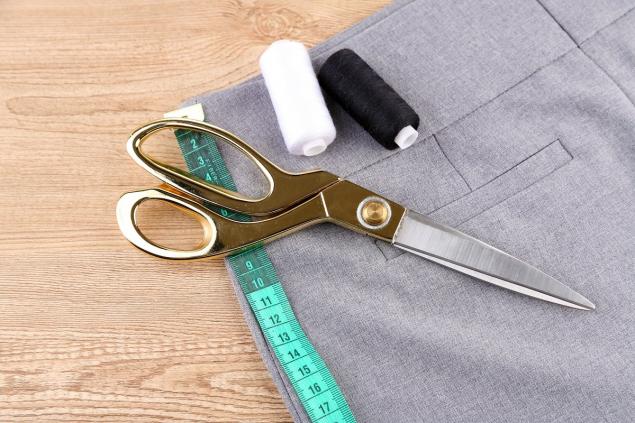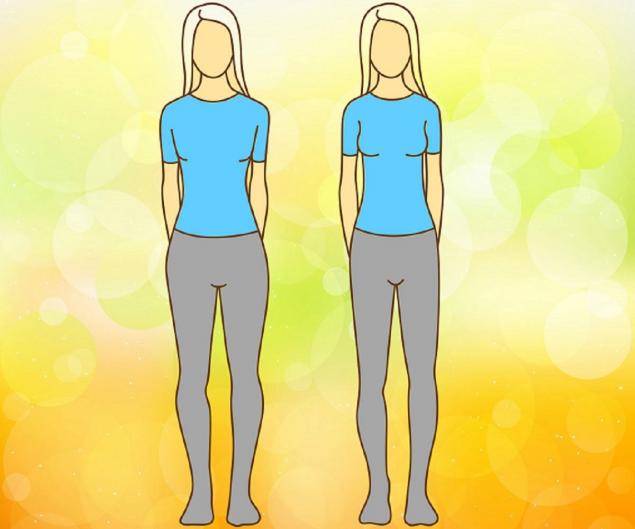203
Mistake in determining the type of figure, because of which mature women unsuccessfully choose clothes
With the advent of the Internet, it has become easier to buy appliances, shoes or clothes. However, this process has its drawbacks: you can not feel, look or try on anything. You can take measurements and try to determine your size. In this article, I will talk about how to correctly define physique. This instruction will help to make buying clothes easier and useful in everyday life.

Often you can hear about the centimeter tape when measuring the figure. In fact, it does not accurately convey measurements, since with the same girth, the figure can look different. To more accurately determine the type and size of the figure, it is better to work with silhouettes.

It is necessary to take into account the features of each figure. For example, with a girth of 90 centimeters, one girl may have a wide back and a small mammary gland. And the other girl is quite the opposite: a narrow back and a large mammary gland. Approximately this is how it looks in the picture below: here you can clearly see that the silhouettes of the figures are different.

The figure in the thigh area also with the thigh area. With a girth, for example, 100 centimeters, there may be wide hips and flat buttocks. Maybe vice versa: narrow thighs, convex buttocks. The figure of each woman is unique, here you can not do only measurements in centimeters.
In addition, the waist girth can be the same in both versions. The waist can be 70 centimeters, the hips - 100, and the figure will look different depending on the type of physique.

If you combine a flat chest with flat buttocks and a convex chest with convex buttocks, you get two different silhouettes. The next picture in the form of a sketch depicts these silhouettes. With the same girth and height, completely different figures turned out. The first silhouette in the picture is an X-type, or figure called the Hourglass. The second silhouette is more like a rectangle, to be more precise, an H-type.
First, the type of figure is needed in order to create a frontal silhouette of the costume. Therefore, you need to consider how the figure looks, not its size. Of course, the centimeter tape is still useful, but you need it in other cases.

Secondly, the silhouette of the costume and figure is based on the ratio of the width of the shoulders, waist and thighs. The key parameter is the width, not the girth, of these zones. You can measure the width with the help of a photo: you need to photograph from 3 meters, holding the camera at chest level. Another option is to stand in the corner of the room and mark with a pencil the width of the shoulders, hips, waist and compare them.

In case the hips and shoulders are the same, and the waist is strongly expressed, the type of figure is the “Hourglass” or X-type. When the hips and shoulders are the same, the waist is weakly expressed, it is an H-type, and the figure is "Rectangle". For a figure of the type “Pear” or A-type hips should be wider than the shoulders. And for the figure "Triangle" - T-type, you need your hips to be wider than your shoulders.

The chest is almost not involved in measurements: its bulge is more responsible for how the figure looks in profile. The hourglass will look a little flat in profile, and the triangle will be convex. But this does not matter for the frontal angle, on which you need to determine the figure. I hope this article will be useful to you for measuring figures and help shed light on how to do them correctly. Good luck!

Often you can hear about the centimeter tape when measuring the figure. In fact, it does not accurately convey measurements, since with the same girth, the figure can look different. To more accurately determine the type and size of the figure, it is better to work with silhouettes.

It is necessary to take into account the features of each figure. For example, with a girth of 90 centimeters, one girl may have a wide back and a small mammary gland. And the other girl is quite the opposite: a narrow back and a large mammary gland. Approximately this is how it looks in the picture below: here you can clearly see that the silhouettes of the figures are different.

The figure in the thigh area also with the thigh area. With a girth, for example, 100 centimeters, there may be wide hips and flat buttocks. Maybe vice versa: narrow thighs, convex buttocks. The figure of each woman is unique, here you can not do only measurements in centimeters.
In addition, the waist girth can be the same in both versions. The waist can be 70 centimeters, the hips - 100, and the figure will look different depending on the type of physique.

If you combine a flat chest with flat buttocks and a convex chest with convex buttocks, you get two different silhouettes. The next picture in the form of a sketch depicts these silhouettes. With the same girth and height, completely different figures turned out. The first silhouette in the picture is an X-type, or figure called the Hourglass. The second silhouette is more like a rectangle, to be more precise, an H-type.
First, the type of figure is needed in order to create a frontal silhouette of the costume. Therefore, you need to consider how the figure looks, not its size. Of course, the centimeter tape is still useful, but you need it in other cases.

Secondly, the silhouette of the costume and figure is based on the ratio of the width of the shoulders, waist and thighs. The key parameter is the width, not the girth, of these zones. You can measure the width with the help of a photo: you need to photograph from 3 meters, holding the camera at chest level. Another option is to stand in the corner of the room and mark with a pencil the width of the shoulders, hips, waist and compare them.

In case the hips and shoulders are the same, and the waist is strongly expressed, the type of figure is the “Hourglass” or X-type. When the hips and shoulders are the same, the waist is weakly expressed, it is an H-type, and the figure is "Rectangle". For a figure of the type “Pear” or A-type hips should be wider than the shoulders. And for the figure "Triangle" - T-type, you need your hips to be wider than your shoulders.

The chest is almost not involved in measurements: its bulge is more responsible for how the figure looks in profile. The hourglass will look a little flat in profile, and the triangle will be convex. But this does not matter for the frontal angle, on which you need to determine the figure. I hope this article will be useful to you for measuring figures and help shed light on how to do them correctly. Good luck!
Gypsy roast with pumpkin and potatoes to lick your fingers to the elbow
Why a Stone Face Destroys Human Life Energy























